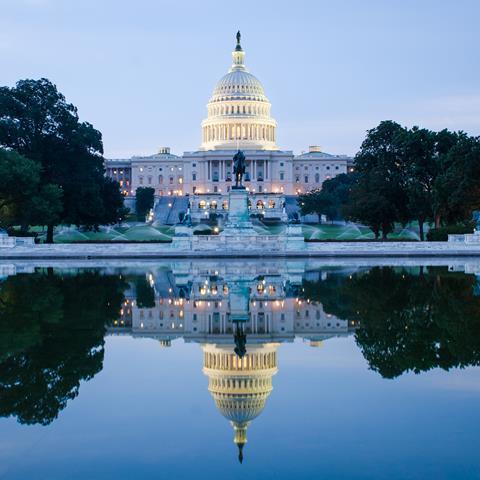By Heather Slavkin Corzo, Head of US Policy, PRI

In January of 2009, as the global financial markets were reeling from the impact of the mortgage crisis, a group of labour, consumer and civil rights groups met at the AFL-CIO headquarters in Washington, DC to hear a presentation by Harvard law professor Elizabeth Warren, who had recently been appointed to lead the Congressional Oversight Panel, tasked with overseeing the US government’s bailout programme. As part of its responsibilities, the panel released a comprehensive report proposing reform of US financial markets regulation. This included comprehensive regulation of derivatives, breaking up “too big to fail” banks, and the creation of a government agency whose sole responsibility would be to protect consumers from tricks and traps in consumer financial products, such as mortgages and credit cards.
Out of that meeting in January, evolved a core group of policy experts and advocates fighting to not only protect consumers, but to also make the financial system more sustainable, thereby avoiding another financial crisis. I helped to organise that meeting and as a result, became deeply involved in the public interest advocacy to reform financial markets.
That experience taught me invaluable lessons about public policy, how the financial markets work, and political wrangling inside the Washington, DC beltway. The fights won and lost in what culminated in the passage of the Dodd-Frank Wall Street Reform and Consumer Protection Act in many ways shaped the financial crisis that is unfolding in front of us today.
As we think about what we are asking government to do in response to the crisis, here are some themes and questions that I’d urge the investment community to consider:
1. How should the investment community respond to structural inequality?
For the past four decades in the US, we have shifted ever-increasing obligations onto workers while lowering real wages. Individual out-of-pocket expenses for healthcare, education and retirement have grown exponentially. To compensate for this inequality, women increasingly entered the workforce, workers increased their hours, and people increasingly came to rely on debt to finance basic needs.
The American consumer is over-leveraged, which magnifies the peaks and troughs in our economic cycles. When workers face a decline in income, as we’re seeing en masse in the US as a result of COVID-19, consumers will conserve cash for as long as possible in order to provide for urgent needs like food and medicine. This means they will stop paying their credit cards, mortgages and student loans. In a world of securitised consumer debt, it is not difficult to imagine what this means for investors.
Policy responses aimed at preventing predatory loans can help peripherally, but are inadequate when the real problem is insolvency.
The investment community often interprets decisions to cut wages or lay off workers as positive news for a company’s bottom line. However, as diversified investors that own not only companies which rely on consumer demand to drive profits but also securitised debt that will implode if consumers cannot make regular payments, are we thinking correctly about how inequality impacts our portfolios?
2. Do returns in good times justify losses when the economy weakens?
In Washington, there is a policy cycle that corresponds to the economic cycle. When the economy is stable, policymakers begin to deregulate financial markets. As economic growth strengthens the deregulation advances even further. Towards the peak of a cycle, we often hear economists beginning to warn about bubbles and excessive risk and even then, the calls for deregulation continue. Then, the economy crashes and policymakers implement minor reforms aimed at addressing the most high-profile problems. This became apparent during recent crises. After ENRON in 2001, policy changes were aimed at improving corporate governance and the audit process. After the 2008 crisis, policy change centred on addressing predatory lending. The Dodd-Frank Act nominally addressed other areas like derivatives and bank insolvency but the reforms were minor and substantially weakened during implementation.
Unfortunately, deregulation while the economy was booming allowed the growth of unregulated, opaque and highly-leveraged financial products often referred to as “the shadow financial system”. When times are good, investors can often achieve positive returns by playing in those markets. When the economy sours, however, the shadow financial markets are often a source of massive losses and the transmission of risk throughout the economy.
We have allowed an endless array of leveraged financial products and strategies to permeate our economy, and facilitated the growth of financial products originally designed to operate relatively safely to incorporate leverage and take on new types of risk. Leverage exacerbates the impact of sudden redemption requests from investors and defaults by borrowers. When market participants don’t have enough information to understand who may be impacted by runs or a wave of defaults, they fear that everyone will be impacted and rush to pull their money from all investments into safe havens such as US Treasuries. Is this cycle good for investors? Would investors do better in the long-run if the system were more transparent and less leveraged?
3. Are investors moving quickly enough to prepare for other risks we know will impact our portfolios?
Environmental, social and governance (ESG) factors need to be integrated into financial regulation and investing to make our economy more resilient. Shocks like the current pandemic are unpredictable but many of the corporate decisions influencing the impact of the virus on companies’ financial performance – like supply chain risk and human capital management – have been a focus for investors for many years.
In order to prepare for and mitigate the risks of climate change, investors are directly engaging with companies to encourage more disclosure of climate risks and responsible business practices. We have not yet experienced traumatic economic shocks as a result of climate change but, as the PRI’s work on the Inevitable Policy Response demonstrates, we know that it is coming. Investors must integrate those risks into their investment analysis sooner rather than later. And, if we can encourage businesses to adjust more quickly, we can mitigate losses in the long run.
4. Now is the time for investors to engage with policymakers to demand changes that will ensure our economy and our society is more resilient to future shocks
Major advances in public policy are often made in times of crisis. It is during these times that we see more openness on the part of policymakers to try new strategies and break from their traditional ideological constraints. Policies that seemed impossible one month ago are now law.
Circumstances are evolving quickly, presenting opportunities to effect positive change for long-term investors who haven’t typically been able to make their voices heard in policy circles. Now is the time to engage. Think bold and big.
The PRI is currently inviting signatories to share ideas through an online discussion group to help shape the PRI’s contribution to a more sustainable recovery post COVID-19 - find out more here.
This blog is written by PRI staff members and guest contributors. Our goal is to contribute to the broader debate around topical issues and to help showcase some of our research and other work that we undertake in support of our signatories.
Please note that although you can expect to find some posts here that broadly accord with the PRI’s official views, the blog authors write in their individual capacity and there is no “house view”. Nor do the views and opinions expressed on this blog constitute financial or other professional advice.
If you have any questions, please contact us at [email protected].








